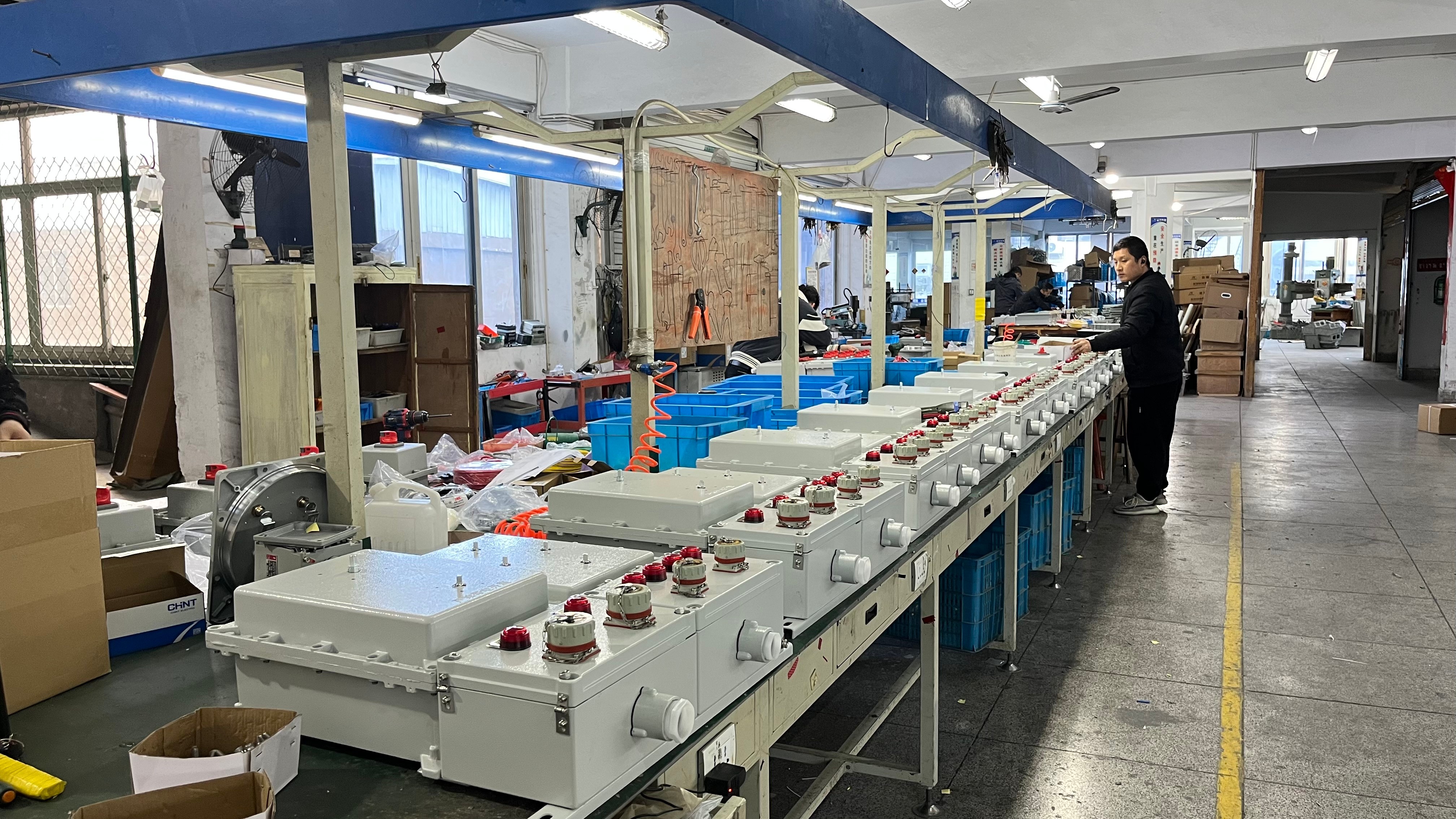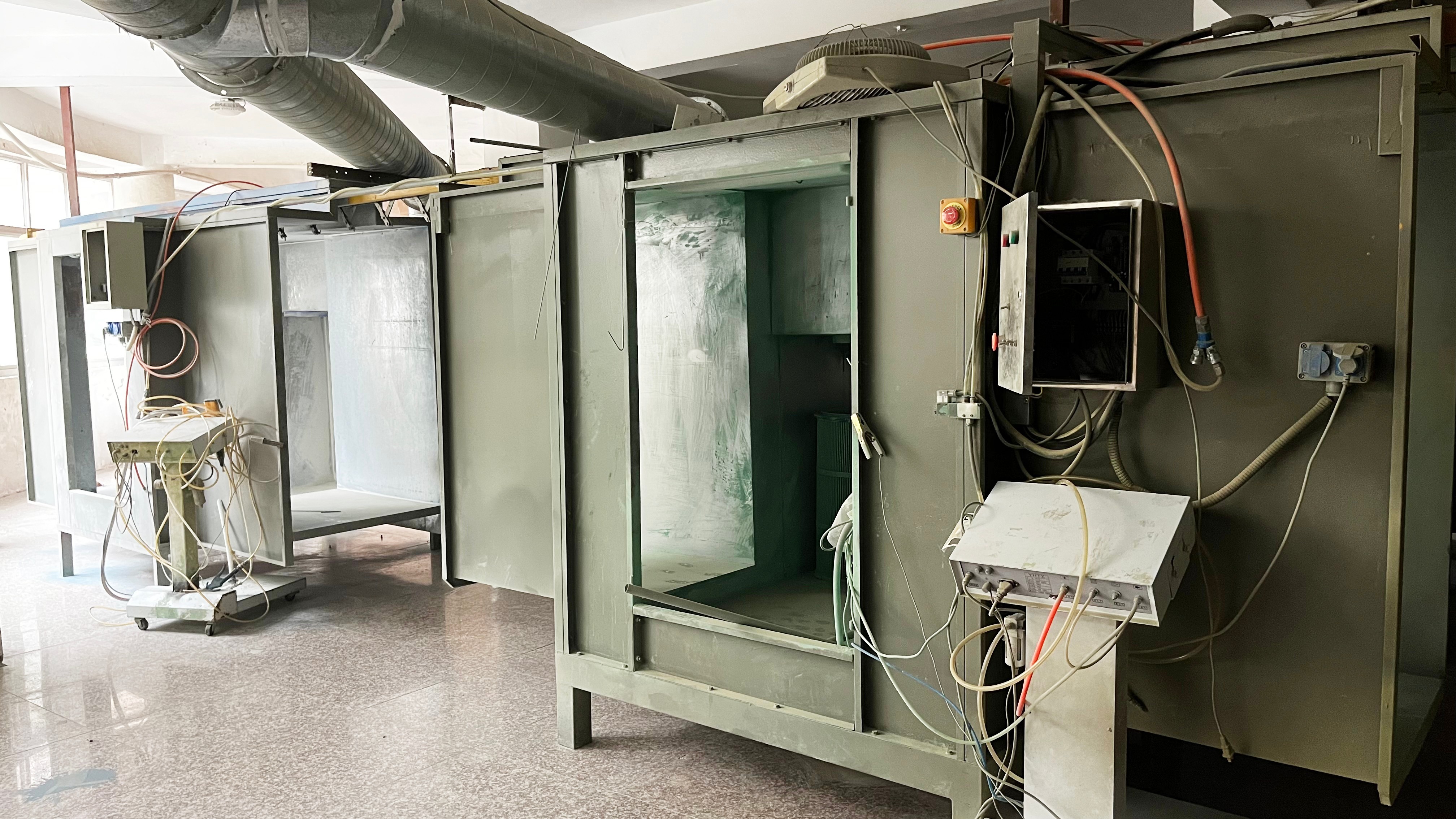Introduction

Understanding combustible materials is crucial to workplace safety. These materials, such as dust and vapors, pose significant risks if not managed properly. From the dangers of combustible dust to the difference between combustible and explosive, it's essential to understand these potential hazards clearly.
Understanding Combustible Materials
Combustible materials encompass many substances that can ignite and burn when exposed to heat or flame. One example is combustible dust, which consists of fine particles that can become airborne during processing or handling. Understanding the characteristics and behavior of these materials is essential for preventing accidents in industrial settings.
Understanding the potential hazards of combustible dust is crucial for maintaining a safe working environment. These fine particles can easily ignite and create explosive conditions, posing a significant risk to workers and equipment. Therefore, it is essential to implement strict housekeeping measures and regular inspections to minimize the accumulation of combustible dust in industrial facilities.
The Dangers of Combustible Dust
Combustible dust poses a significant risk of causing devastating explosions if improperly managed. To mitigate this hazard, it's crucial to understand and control several key factors:
- Explosive range: This is the concentration of fuel vapor and air that can combust. Keeping dust levels low is essential to prevent explosions.
- Ignition temperature: This is the temperature required for sustained combustion. Monitoring this closely helps prevent ignition.
- Secondary explosions: occur when disturbed dust is ignited, often causing more damage than the initial blast. Regular cleaning and housekeeping are vital to prevent dust accumulation and reduce this risk.
By carefully addressing these factors, businesses can significantly reduce the likelihood of combustible dust explosions and protect their employees and facilities.
The Difference Between Combustible and Explosive
It's important to differentiate between combustible and explosive materials. While both can result in fires or explosions, combustible materials require an ignition source and specific conditions for combustion. On the other hand, explosive materials are inherently unstable and can detonate without external ignition.
Combustible materials may not detonate independently, but they can still pose a significant fire hazard if improperly handled. Common examples of combustible materials include wood, paper, and certain fuel types. These materials can ignite and burn when exposed to an ignition source such as a spark or flame. It's important to store and handle combustible materials carefully to prevent accidental fires.
What is Considered a Combustible Material?
Defining Combustible Dust
Combustible dust refers to fine particles that present a fire or explosion hazard when suspended in air under certain conditions. These particles can come from wood, metal, plastics, or organic matter and are often generated during manufacturing.
In addition to manufacturing processes, combustible dust can be produced during activities such as cutting, grinding, or sanding materials. These activities create fine particles that can become suspended in the air and pose a significant risk if not properly managed. The range of concentrations for combustion is an important consideration when assessing the potential hazards of combustible dust. Even small amounts of these particles in the air can lead to catastrophic fires or explosions if ignited.
The Range of Concentrations for Combustion
The range of fuel vapor and air concentrations within which combustion can occur is known as the flammable range. For most combustible materials, this range typically falls between 5% and 15% by volume in the air. Understanding this range is crucial for industries to prevent potential fire or explosion hazards.
Understanding the flammable range is essential for maintaining a safe working environment, as it allows industries to establish proper ventilation and safety measures. By knowing the concentration at which combustion can occur, businesses can take proactive steps to minimize the risk of fire or explosion. Moreover, this knowledge enables companies to develop effective emergency response plans in case of accidental ignition within the flammable range.
The Temperature for Sustained Combustion
The temperature at which sustained combustion occurs depends on the material involved. However, sustained combustion generally occurs at temperatures above the material's autoignition point, the lowest temperature at which a substance will spontaneously ignite in a normal atmosphere.
In addition to the autoignition point, oxygen is a critical factor in sustained combustion. Most combustible materials require oxygen to sustain the chemical reaction that produces heat and light. Without an adequate oxygen supply, combustion cannot be sustained, regardless of the material's autoignition point. This is why fire safety protocols often involve limiting or removing oxygen from a fire's environment, such as using fire blankets or extinguishers.
Identifying Combustible Materials

Examples of Combustible Dust
Combustible dust refers to fine particles that present a fire or explosion hazard when suspended in the air. Common examples include metal dust, wood dust, and plastic dust. These materials can accumulate on surfaces and machinery, creating a potential ignition source.
Combustible dust can include organic materials such as grain, flour, sugar, and powdered milk. When finely ground particles are dispersed, these substances have the potential to form explosive mixtures in the air. Additionally, pharmaceutical dust, coal dust, and even some types of paper and pulp can pose a significant fire and explosion hazard if not properly managed. It's important for industries that handle these materials to be aware of the risks and take appropriate precautions to prevent accidents.
Characteristics of Combustible Materials
The flammable range is the critical fuel vapor and air concentration that can ignite and sustain combustion. This range typically falls between 5% and 15% for most combustible materials.
- The flammable range determines a material's fire hazard potential.
- A wider flammable range, like gasoline, indicates a higher combustion risk.
- A narrower range, like natural gas, requires specific conditions for ignition.
- Ignition temperature is another crucial factor, usually between 300°C and 600°C.
Understanding these factors is essential for implementing effective fire safety measures in various environments.
Combustible vs. Explosive
The distinction between combustible and explosive lies in their reaction to heat and pressure. While combustible materials require an external ignition source to initiate combustion, explosive materials can rapidly release energy without an external ignition source. Understanding this difference is crucial for identifying and managing potential hazards in industrial settings.
It's important to note that while combustible materials may not ignite without an external ignition source, they can still pose significant risks in industrial settings. This is why it's crucial to properly store and handle these materials to minimize the potential for combustion. Additionally, implementing strict protocols for using combustible materials and providing proper employee training can help reduce the likelihood of accidents or fires.
Now that we understand combustible materials better and their characteristics, let's explore strategies for managing these hazards effectively.
Managing Combustible Materials

Jinrong's Experience in Ex-Proof Manufacturing
Jinrong has over 20 years of experience manufacturing ex-proof equipment, specializing in solutions for combustible materials. Their expertise in creating safe and reliable products has made them a trusted partner for industries dealing with combustible dust.
Jinrong's extensive experience in manufacturing ex-proof equipment has allowed them to develop a deep understanding of the regulations and standards for handling combustible materials. Their products are designed to meet or exceed industry requirements, ensuring their clients can operate safely and efficiently. By staying up-to-date with the latest guidelines, Jinrong continues to provide innovative solutions for industries dealing with combustible dust.
Regulations and Standards for Combustible Materials
Regulations and standards for combustible materials vary by industry and location. Still, they are crucial for ensuring safety. Organizations like OSHA provide guidelines for managing combustible dust to prevent accidents and protect workers from potential hazards. Companies must stay updated on these regulations and ensure compliance to avoid fines and lawsuits and, most importantly, keep their employees safe. Businesses can minimize the risk of fires or explosions by implementing best practices for handling combustible materials, such as proper storage, ventilation systems, and regular inspections.
Best Practices for Handling Combustible Materials
Effective management of combustible materials is crucial for preventing accidents and ensuring workplace safety. To achieve this, it's essential to implement the following key practices:
- Regular equipment maintenance: Prevent dust buildup to minimize fire hazards.
- Comprehensive employee training: Educate staff on safe handling procedures and emergency response.
- Appropriate protective gear: Equip workers with necessary safety equipment to reduce risks.
Understanding the potential risks associated with combustible materials is equally important. By collaborating with experienced manufacturers like Jinrong and strictly adhering to regulations, industries can create safer work environments while handling these substances responsibly.
Partner with Jinrong for Ex-Proof Solutions

Ensuring Safety in Handling Combustible Materials
It is crucial to prioritize safety when dealing with combustible materials. Understanding combustible dust and its dangers is key to preventing accidents. By implementing proper handling and storage procedures, as well as regular maintenance and inspections, businesses can ensure the safety of their employees and facilities.
Prioritizing safety also involves investing in the right equipment and technology to mitigate the risks associated with combustible materials. Partnering with Jinrong for Ex-Proof Solutions can provide businesses with the expertise and products needed to create a safe working environment. By utilizing state-of-the-art ex-proof equipment, businesses can further reduce the likelihood of accidents and ensure compliance with safety regulations.
Jinrong offers expertise in ex-proof manufacturing, providing solutions for safely managing combustible materials. With their knowledge and experience, businesses can benefit from state-of-the-art equipment and systems that mitigate the risks associated with combustible dust. Partnering with Jinrong can provide peace of mind and a proactive approach to safety.
Jinrong's ex-proof manufacturing expertise extends beyond providing solutions for safely managing combustible materials. Their team also offers comprehensive training and support to ensure businesses can handle potential hazards effectively. By partnering with Jinrong, companies can access cutting-edge equipment and benefit from ongoing guidance and assistance in maintaining a safe work environment.
Building a Safer Work Environment with Combustible Material Management
By adhering to regulations and standards for combustible materials and adopting best practices for handling them, businesses can create a safer work environment. Educating employees on the characteristics of combustible materials and the difference between combustible and explosive substances also plays a crucial role in risk mitigation. Through diligence and collaboration with experts like Jinrong, companies can build a workplace prioritizing safety above all else.
Furthermore, regular safety audits and inspections should be conducted to identify potential hazards and ensure that all safety protocols are followed. This proactive approach can help businesses avoid potential risks and make necessary adjustments to prevent accidents. In addition, providing employees with proper training and access to safety equipment can empower them to take ownership of their own safety, creating a culture of accountability within the workplace.

